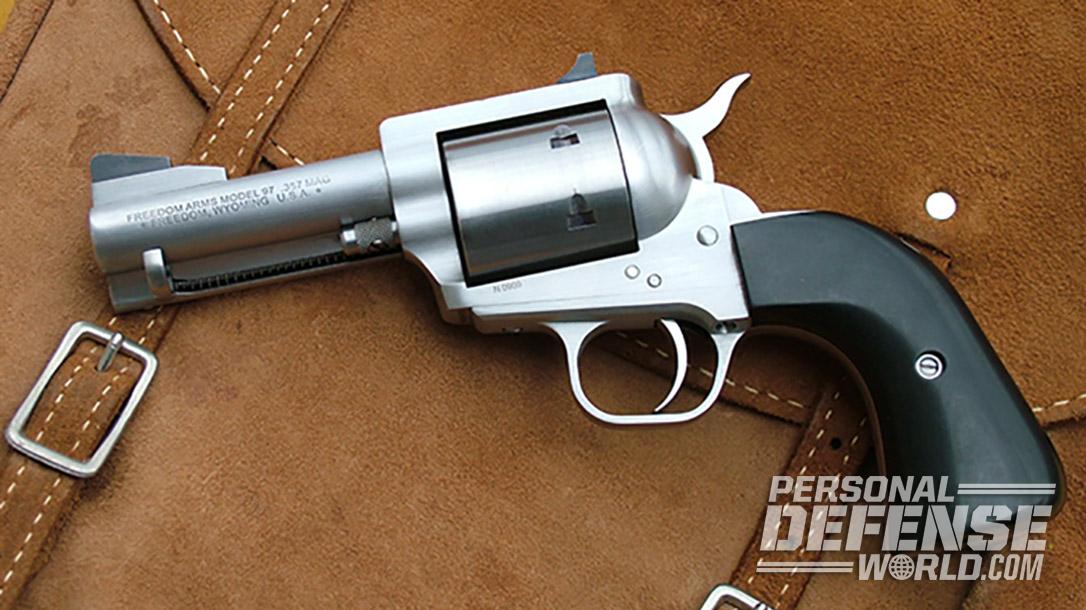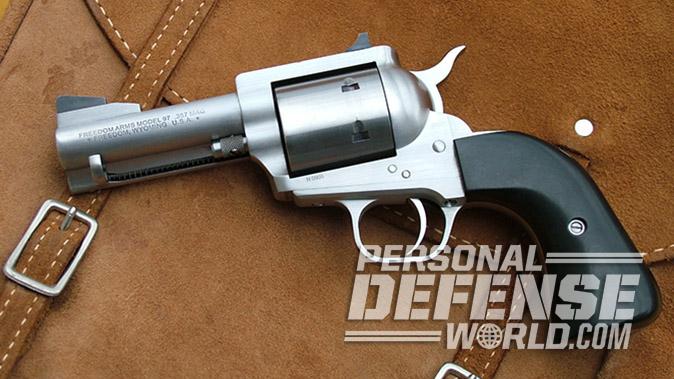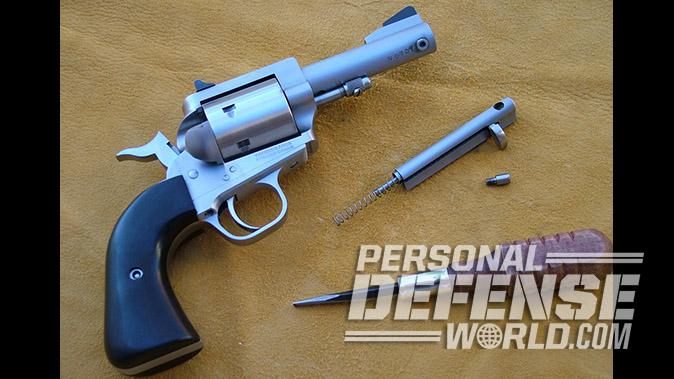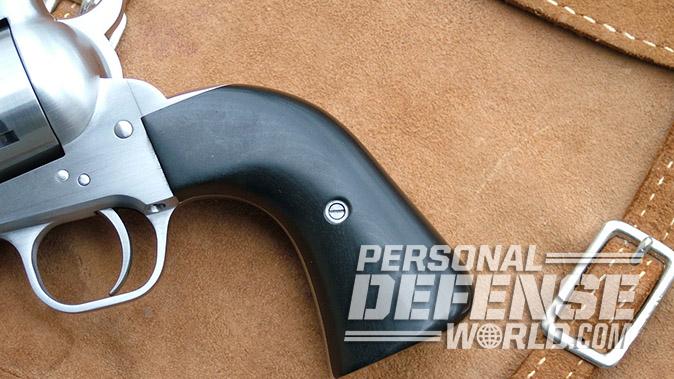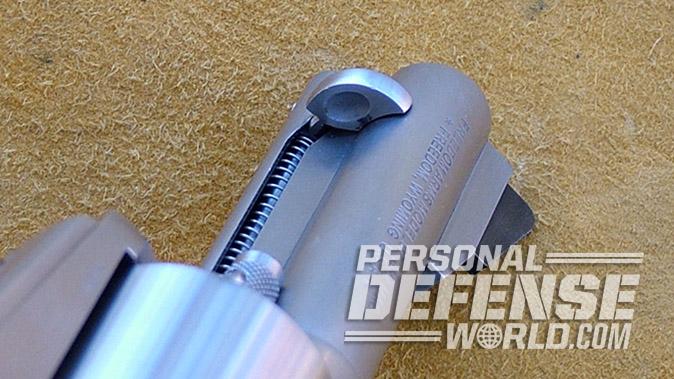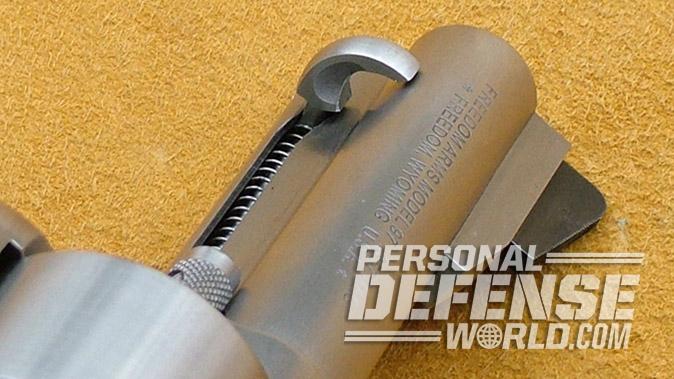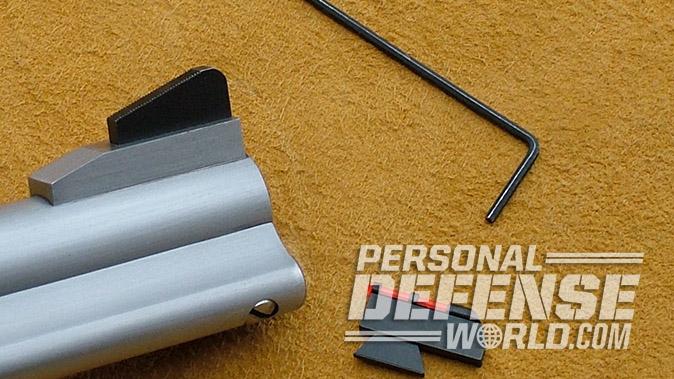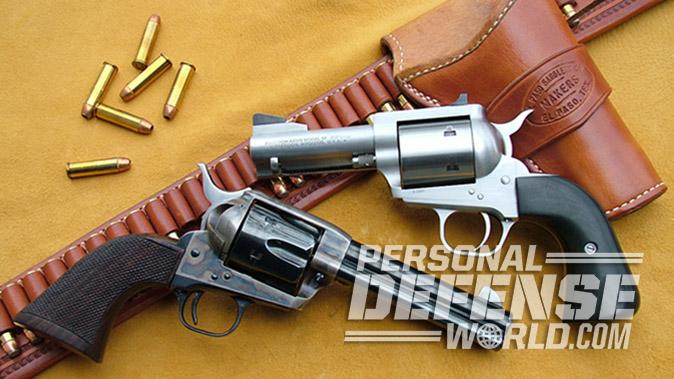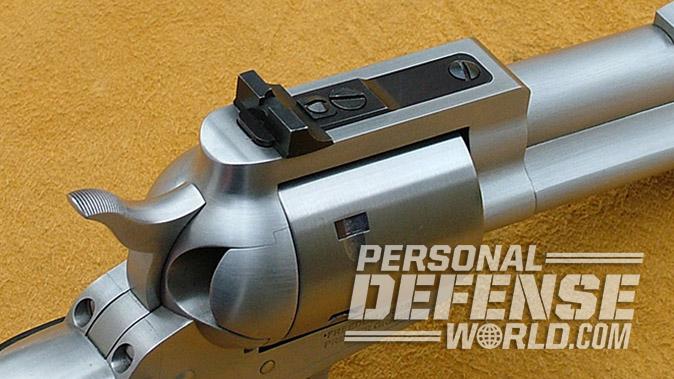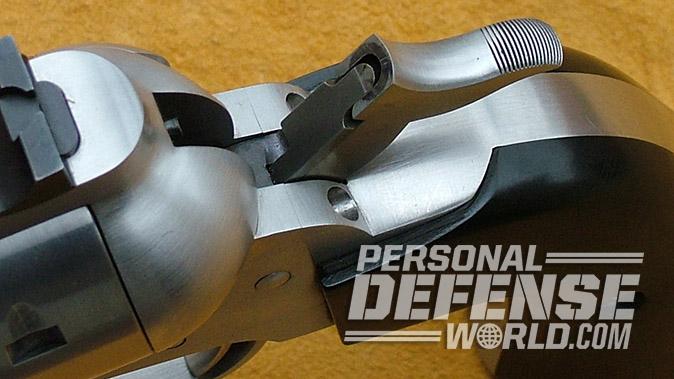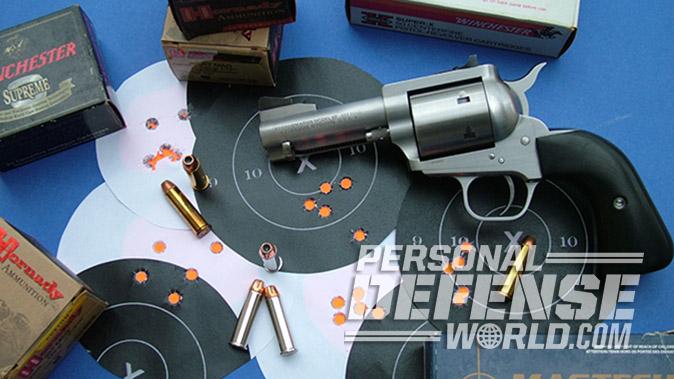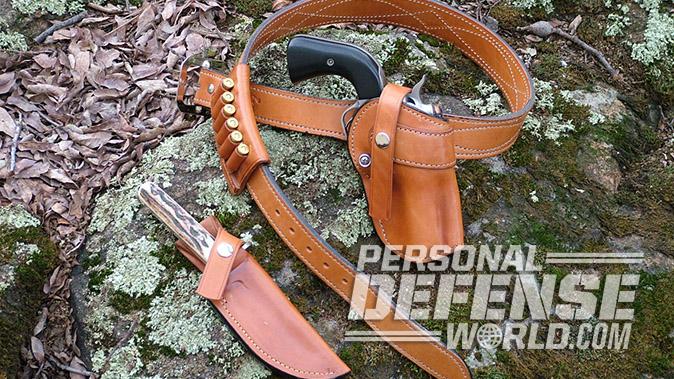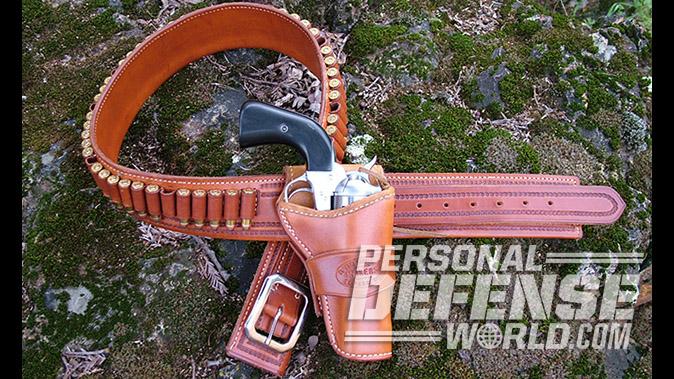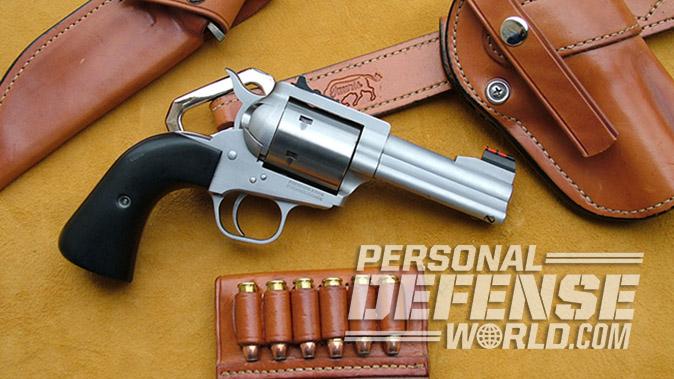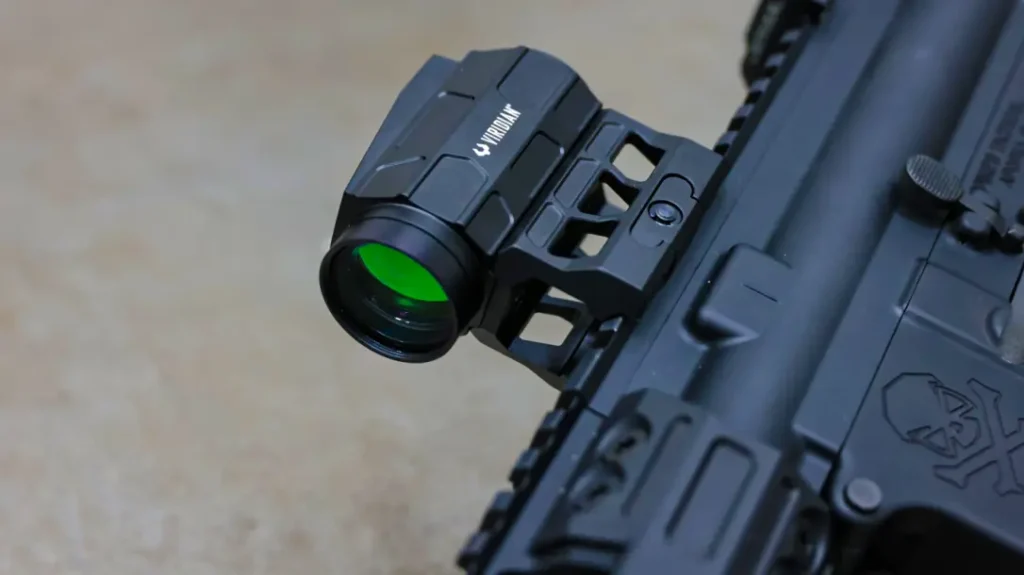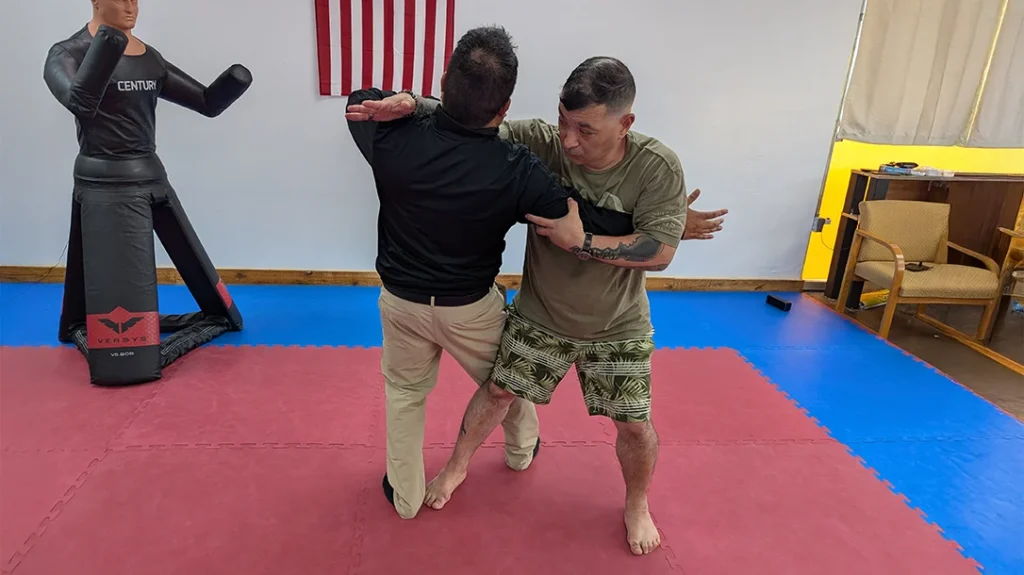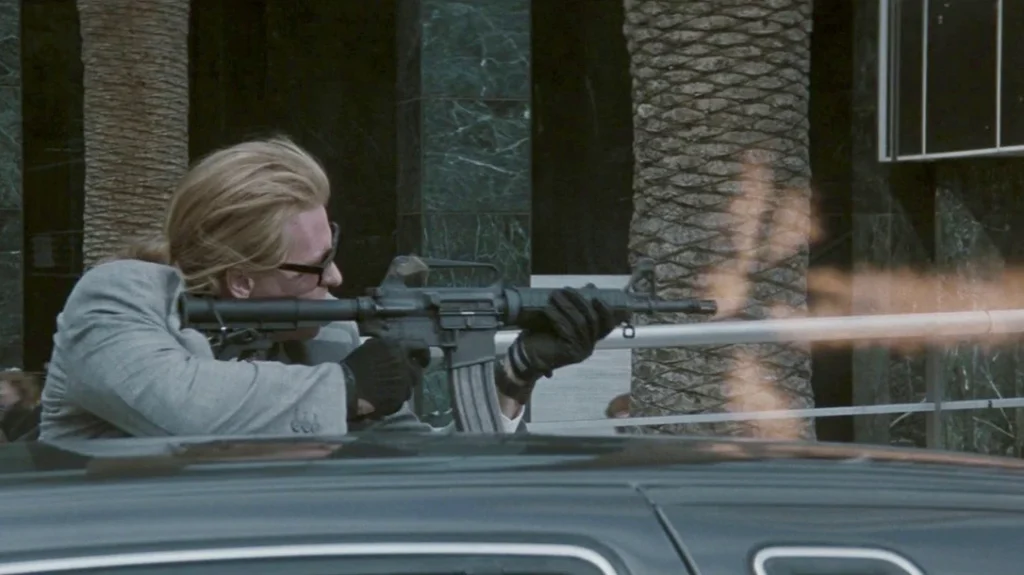For many years now, it’s been a common practice of mine to regularly make the rounds of local gun shops to see if I can find something new—or new to me, anyway—that I either want, think I want, need, think I need, have never had, have always desired or have never seen before. More of an accumulator than a collector (although I did spend several years seriously chasing down all the Smith & Wesson Hand Ejectors I could find), I’ve never been particularly partial to any one style, make or caliber of firearm. I like them all. If I were pressed to pick the type of gun I most like, it would have to be handguns, be they single actions, double actions, semi-autos or single-shots. Having said all that, it takes something pretty special or unusual these days to ignite my passion for a new pistol.
That happened just a few months ago. I was standing at the counter of a local gun shop when a guy entered wanting to sell a few of his handguns. With my interests piqued, I watched what he uncased from a distance.
Although he produced three different handguns, the minute I got a glimpse of the shiny Freedom Arms Model 97, I saw nothing else. Not wanting to interject myself into anyone else’s gun deal, I left in the middle of their negotiations but told a buddy of mine who worked at the shop that if they ended up with the little single action, to call me. Thankfully, he did.
Advertisement — Continue Reading Below
This wasn’t my first experience with Freedom Arms. I’ve owned three different big-framed Model 83s chambered for the formidable .454 Casull and have field-tested one of the company’s newer Model 97s back in 1998 shortly after it was introduced. That 97 had been a 5.5-barreled .357 Magnum, and to this day it’s still one of the most accurate .357s I’ve ever fired. My newly acquired Model 97 is just a little different than the one I’d previously reviewed.
Meet The Model 97
The single-action Model 97 is based on a frame size comparable to that of the Colt SAA. It’s available with or without adjustable sights and is fabricated almost entirely of stainless steel. It is currently offered in eight different standard chamberings that include the .45 Colt, .44 Special, .41 Remington Magnum, .357 Magnum, .327 Federal, .22 LR, .17 HMR and a proprietary Freedom Arms round called the 224-32 FA, which is basically a .327 Federal case re-formed in a bottleneck configuration to utilize a 40-grain .224-caliber bullet. The .45 Colt, .44 Special and .41 Magnum 97s are five-shooters while the remaining chamberings each hold six. My newly acquired Model 97 is a six-shooter in .357 Magnum.
Advertisement — Continue Reading Below
The Model 97 can be had in standard barrel lengths of 4.25, 5.5, 7.5 and 10 inches, depending on caliber. Mine wears a barrel measuring just 3.5 inches, which is a custom option offered by Freedom Arms on new orders or for retrofitting existing guns. Its ejector rod assembly has been reduced in length to just meet the end of the 97’s shortened barrel. Like all adjustable-sighted Freedom Arms revolvers, the front sight blade on my 97 is easy to remove and replace with one of a different height or style. Mine wore a serrated, 0.330-inch-tall blade when I acquired it, and I’ve since obtained a second blade of similar height featuring a red fiber-optic insert. I use the black serrated blade when shooting paper targets or testing loads, and the fiber-optic sight when carrying the gun afield.
Another custom option offered by Freedom Arms found on my Model 97 is the round-butt grip frame. The Bisley-style grip normally found on the 97 is similar in shape to the Model 83’s, but it’s slightly smaller to complement the former’s smaller frame. By rounding off the back of the 97’s frame and slimming its panels at the bottom, Freedom Arms has created a new grip shape that is more compact for carry and extremely comfortable in hand, all while adding immensely to the overall aesthetics of the firearm. This modified grip fits my extra-large paws perfectly and, to date, I’ve yet to find a single .357 Magnum loading that wasn’t comfortable to fire utilizing this reconfigured setup.
The standard grip panels on the Model 97 are made from a resin-impregnated laminated hardwood, but black or ivory Micarta grips are offered as an upgrade. My short-barreled, round-butt Model 97 wears the optional black Micarta panels that were obviously fitted and finished right on its modified frame, as no discernable seam can be felt between the Micarta and metal.
Advertisement — Continue Reading Below
More Details
Although Freedom Arms offers the larger Model 83 in two grades, Field and Premier, the Model 97, so far, has only been offered in the more cosmetically detailed Premier Grade. While both grade guns are made with the same materials and machining tolerances, the Premier Grade guns have a brighter brushed stainless exterior while the Field Grade guns come with a more economical matte finish.
Like every other Freedom Arms revolver I’ve owned or examined, my abbreviated Model 97 has a fit and finish that has to be seen and felt to be fully appreciated. All of the seams meet flawlessly, all of the polishing is uniform, and the action works with the precision only tight machining and fitting allow. The trigger pull measures a crisp, repeatable and clean-breaking 2.9 pounds.
The indexing on all six chambers is precise, with virtually no cylinder movement in any direction present regardless of hammer position. The barrel/cylinder gap on this revolver will not accept a 0.002-inch feeler gauge and remains consistent throughout the cylinder’s rotation.
Advertisement — Continue Reading Below
Like all Freedom Arms revolvers, the 97’s cylinder is line-bored to ensure maximum bore/cylinder alignment with each chamber, which contributes immensely to the accuracy these revolvers are known for.
The adjustable rear sight, along with the serrated front blade, are the only blued parts (except for the frame-mounted firing pin and bushing) visible on the 97. The rear sight is fully adjusted for windage and elevation and, as previously mentioned, the front sight is easily replaceable with those of different height or configuration. Together, they provide for an easy-to-align sight picture.
The Model 97 comes equipped with a patented transfer bar safety system that keeps the hammer from contacting the frame-mounted firing pin unless the trigger is pulled, allowing it to be safely carried fully loaded with a round under the hammer. Unlike other transfer bar safety systems, the Model 97’s is contained in the face of its hammer, and its design doesn’t affect or influence the trigger pull. Finally, my Model 97 weighs 37 ounces unloaded, making it light enough to carry around all day yet heavy enough to mitigate recoil.
Advertisement — Continue Reading Below
In preparation for this article, I got ahold of Freedom Arms President Bob Baker for some background on this particular pistol. Its serial number revealed that it was made in March of 2010 and had been custom-ordered with its short barrel, round butt and black Micarta grips.
Bob related that approximately 5 to 10 percent of the 97s that the company produces have custom-ordered 3.5-inch barrels, and this is most often requested along with the round-butt option. He said this modification included altering the radius of the backstrap and reducing the width of the grips at the bottom. This, he said, helped to mitigate recoil, providing for a more comfortable handle that was easier to hold onto during firing. I personally find it one of the most comfortable and controllable grip shapes I’ve ever experienced. And of the calibers offered in the Model 97, Bob advised that the three most popular calibers were the .357 Magnum, .44 Special and .45 Colt.
The only aspect of my custom 97 that I didn’t care for was the necessity to remove the ejector assembly in order to remove the center pin and cylinder for cleaning. This is not a problem with the longer-barreled 97s that Freedom Arms offers, and when I mentioned this to Bob, he related that they had devised a modification to the 97’s ejector rod button that solved this problem. A little machining on the existing button would provide clearance for the cylinder pin head, and he said that if I would send him my ejector assembly, he’d so modify it. I sent the gun in for the alteration, and now this modification is standard and included as part of the company’s barrel shortening option.
Advertisement — Continue Reading Below
In The Field
Over the several months I’ve owned this modified Model 97, I’ve put somewhere in the neighborhood of 1,000 rounds downrange, testing both factory and reloaded ammo. I did this not because I couldn’t find anything it would shoot, but because I just really enjoyed shooting this delightful little arm. It shoots most everything well and some things exceptionally well in spite of its short sight radius.
I’ve also acquired two different carry rigs for my 97 since purchasing it. The first, a cowboy rig, was made by El Paso Saddlery. This setup consists of the company’s #44 Half-Breed holster mounted on a #1 Money Belt. The holster is part Mexican loop holster and part modern Austin design. The pouch is lined with pigskin that is rolled over and stitched along the recurve to protect against damage while reholstering. It sports an open muzzle, and all of the waxed nylon stitching is tight and uniform.
Advertisement — Continue Reading Below
The belt is constructed out of a single piece of 5-inch-wide, top-grade, 9- to 10-ounce, vegetable-tanned cowhide folded in half and stitched along its top. This durable belt also sports attractive border stamping, and it came from El Paso Saddlery equipped with 52 sewn-on .38-caliber cartridge loops.
For a more modern field-carry rig, I turned to custom holster-maker Mike Taurisano of Tauris Holsters. Drawing on his experience as a law enforcement officer, Mike has developed a unique custom line of functional holsters, belts and accessories for discerning shooters. Having examined, tested and owned several examples from his product line over the years, I knew he was the holster-maker that I wanted to build the field rig for my unique little gun.
In discussing the rig with Mike, we decided to build it around one of his Enhanced Standard Hip holsters (also called the Tauris Ranger) with both a tension screw and a safety strap to ensure positive retention. Since I like to carry my field guns on my off side, I asked Mike to set the cant of the holster for cross-draw carry. The holster is made from 8- to 9-ounce, high-quality, vegetable-tanned leather. It’s fully cowhide lined and has a wide belt tunnel sized to fit tightly on its matching gun belt. It has a leather-reinforced, cut-down mouth for quick access and easy reholstering. The fit for my Model 97 was perfect in spite of the fact that Mike had nothing like it to build this holster around, except for my description of the 97 and a picture or two of it I emailed him.
Advertisement — Continue Reading Below
As usual, Mike’s execution of my dream rig was exceptional, with all of the edges properly finished, all of the stitching tight and uniform, and it turned out just as I had envisioned it. It fits the 97 like a glove.
In the end, duplicating this little Freedom Arms Model 97 and obtaining these carry rigs will set you back quite a few dollars. But the gun is built to impeccable standards, and perfection isn’t cheap. Personally, I think it’s worth it.
Freedom Arms Model 97 Specs
| Caliber: .357 Magnum |
| Barrel: 3.5 inches |
| OA Length: 8.5 inches |
| Weight: 37 ounces (empty) |
| Grips: Micarta |
| Sights: Ramp front, adjustable rear |
| Action: SA |
| Finish: Stainless |
| Capacity: 6 |
| MSRP: N/A |
Freedom Arms Model 97 Performance
| Load | Velocity | Accuracy |
|---|---|---|
| Hornady 125 XTP | 1,462 | 1.60 |
| Hornady 140 FTX | 1,386 | 1.39 |
| Hornady 158 XTP | 1,252 | 1.79 |
| Magtech 158 JSP | 1,273 | 1.85 |
| Winchester 140 Silvertip | 1,328 | 1.80 |
| Winchester 180 Partition Gold | 1,145 | 1.40 |
*Bullet weight measured in grains, velocity in fps by chronograph and accuracy in inches for five-shot groups at 25 yards.
For more information about Freedom Arms, visit freedomarms.com.
